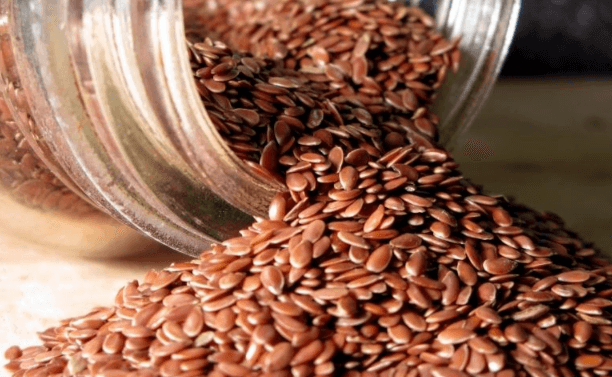alsedaysi: What is Alsedaysi?

Alsedaysi, a term steeped in history and culture, originated from a unique blend of linguistic and societal influences. The word itself is derived from an ancient language, representing a concept or practice deeply ingrained in the cultural heritage of a specific region. This practice embodies traditions, rituals, and customs passed down through generations, evolving yet retaining its core identity.
Alsedaysi in Modern Context
In contemporary society, Alsedaysi has adapted to modern needs and global influences while preserving its traditional roots. It represents a bridge between the past and the present, showcasing how cultural practices can evolve and integrate into today’s globalized world without losing their essence.
The Cultural Significance of Alsedaysi
Alsedaysi in Local Traditions
Alsedaysi plays a pivotal role in local traditions, marking significant events, celebrations, and rites of passage. It acts as a cornerstone for community gatherings, fostering a sense of identity and continuity among its practitioners.
The Role of Alsedaysi in Contemporary Culture
Today, Alsedaysi not only enriches the lives of those who practice it but also offers a window into the culture for outsiders. It serves as an educational tool that promotes understanding and appreciation of diversity, demonstrating the adaptability of cultural traditions in a rapidly changing world.
Alsedaysi Practices and Applications
Common Practices Associated with Alsedaysi
The practices associated with Alsedaysi include a range of activities that might involve artistic expressions, culinary traditions, or spiritual ceremonies. These practices are not only a means of preserving history but also serve as a platform for communal expression and personal fulfillment.
How Alsedaysi is Adapted in Different Regions
As Alsedaysi spreads across different regions, it adapts to local customs and integrates with other cultural practices. This adaptation is crucial for its survival and relevance, making Alsedaysi a dynamic and living tradition that resonates with diverse populations.
Key Figures and Influencers of Alsedaysi
Pioneers of Alsedaysi
The pioneers of Alsedaysi were influential figures who recognized the value of these practices and worked tirelessly to preserve and promote them. Their efforts have ensured that Alsedaysi remains vibrant and significant.
Modern Advocates and Their Contributions
Modern advocates of Alsedaysi include scholars, cultural practitioners, and community leaders who have introduced innovative ways to engage with these traditions. They utilize modern media and communication strategies to reach a broader audience and ensure the continuity of Alsedaysi.
Alsedaysi in Art and Literature
Representation of Alsedaysi in Literature
Alsedaysi has been a rich source of inspiration for writers and poets, who have captured its essence in their works. Through literature, the subtleties and depth of Alsedaysi traditions are explored, offering insights into the human condition and cultural identity.
Alsedaysi’s Influence on Modern Art
In the realm of visual arts, Alsedaysi has influenced a variety of artistic expressions. Artists have drawn on its themes, symbols, and practices to create works that comment on society, history, and the interplay between tradition and modernity.
Technological Impact on Alsedaysi
Technology’s Role in Spreading Alsedaysi
Technology has played a crucial role in the dissemination of Alsedaysi, making it accessible to a global audience. Through digital media, online forums, and virtual reality experiences, people worldwide can now experience and participate in Alsedaysi practices.
Future Prospects of Alsedaysi with Technology
The future of Alsedaysi looks promising as technology opens new avenues for innovation and interaction. This integration promises to keep Alsedaysi relevant and engaging for future generations, helping to preserve these cultural practices in an increasingly digital world.
Alsedaysi Events and Festivals
Major Alsedaysi Festivals Worldwide
Alsedaysi festivals are celebrated with great enthusiasm around the world, showcasing the richness of this cultural practice. These festivals not only honor traditional customs but also serve as a platform for cultural exchange and mutual understanding.
Local Events Celebrating Alsedaysi
Local events offer communities the opportunity to engage with Alsedaysi on a more intimate level. These events often include workshops, performances, and exhibitions, tailored to educate and inspire both young and old about the significance of Alsedaysi.
Educational Impact of Alsedaysi
Alsedaysi in Academic Studies
Academic institutions have begun to recognize the importance of Alsedaysi, incorporating it into curricula that explore cultural studies, anthropology, and history. This academic interest fosters a deeper understanding of its impact and evolution.
Educational Resources for Learning About Alsedaysi
Numerous resources are available for those interested in learning about Alsedaysi. These include books, documentaries, and online courses that offer comprehensive insights into its practices and cultural significance.
The Economic Aspect of Alsedaysi
Alsedaysi’s Role in the Local Economy
Alsedaysi contributes significantly to the local economy through tourism, craftsmanship, and the arts. It attracts tourists eager to experience its rich cultural heritage firsthand, providing a boost to local businesses and artisans.
Global Economic Contributions of Alsedaysi
On a global scale, Alsedaysi has influenced various industries, including fashion, film, and music, demonstrating its versatility and appeal. This influence not only enriches global culture but also creates economic opportunities far beyond its place of origin.
Challenges Facing Alsedaysi
Contemporary Challenges
Today, Alsedaysi faces challenges such as globalization, which can dilute its unique aspects, and the disinterest of younger generations, potentially leading to its decline.
Solutions and Innovations in Alsedaysi Practices
To address these challenges, proponents of Alsedaysi are innovating ways to maintain its relevance. This includes integrating Alsedaysi with modern entertainment forms, social media, and educational programs that engage the youth.
Alsedaysi and Globalization
Effects of Globalization on Alsedaysi
Globalization has both challenged and enhanced Alsedaysi, introducing it to a global audience while also threatening to overshadow its local characteristics.
Alsedaysi’s Influence on Global Cultural Practices
Alsedaysi has enriched global cultural practices by offering alternative perspectives and methodologies in various fields such as arts, education, and social sciences.
Comparing Alsedaysi with Similar Practices
Similarities with Other Global Traditions
Alsedaysi shares several similarities with other cultural practices around the world, including its emphasis on community, tradition, and the preservation of heritage.
Key Differences and Unique Features
What sets Alsedaysi apart is its unique blend of rituals, history, and the way it adapts to contemporary issues, making it relevant in today’s diverse global landscape.
Personal Stories and Testimonies About Alsedaysi
Inspirational Stories from Alsedaysi Practitioners
Many practitioners of Alsedaysi share moving stories of how these traditions have influenced their lives, providing them with a sense of purpose and connection to their heritage.
How Alsedaysi Has Changed Lives
These testimonies highlight the transformative power of Alsedaysi, affirming its role in fostering personal growth and community resilience.
Future Directions for Alsedaysi
Predictions and Future Trends
The future of Alsedaysi is likely to be shaped by ongoing cultural dialogues and the increasing integration of technology, which will open new pathways for its practice and preservation.
Innovations Shaping the Future of Alsedaysi
Innovations in how Alsedaysi is taught, shared, and practiced could significantly influence its trajectory, ensuring its survival and relevance for future generations.
FAQs About Alsedaysi
How did Alsedaysi originate and what does it represent? Alsedaysi originated from ancient cultural practices that have been passed down through generations. It represents a complex interweaving of historical, spiritual, and social elements that are central to the identity of its practitioners.
What are the main practices associated with Alsedaysi? The main practices of Alsedaysi involve ceremonial rituals, artistic expressions, and communal gatherings that emphasize the values and heritage of the community.
How can someone get involved with Alsedaysi? Individuals can get involved with Alsedaysi by participating in local festivals, attending workshops, and connecting with cultural centers that offer programs focused on these traditions.
What impact has technology had on the dissemination of Alsedaysi? Technology has significantly broadened the reach of Alsedaysi, allowing it to be shared and practiced globally through digital platforms and social media.
What are the biggest challenges Alsedaysi faces today? The biggest challenges include maintaining authenticity in the face of globalization and engaging the younger generation in its practices.
Where can one find more information about Alsedaysi events and festivals? Information about Alsedaysi events and festivals can typically be found at cultural heritage sites, local community centers, or through online platforms dedicated to cultural preservation.
Conclusion
In conclusion, Alsedaysi remains a vibrant and evolving practice that continues to play a significant role in the cultural and social lives of its adherents. By embracing both tradition and innovation, Alsedaysi not only preserves its past but also paves the way for a dynamic future. Its rich heritage and ongoing relevance offer valuable lessons in cultural resilience and adaptability, making it an enduring symbol of cultural richness in a globalized world.




